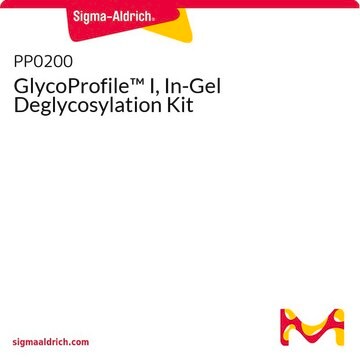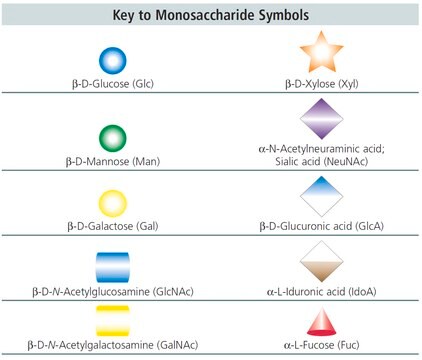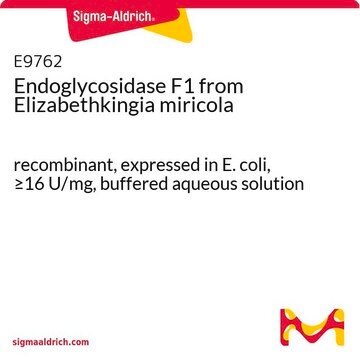P7367
PNGase F from Elizabethkingia meningoseptica
BioReagent, ≥95% (SDS-PAGE)
Synonym(s):
N-Glycosidase F, PNGase F from Chryseobacterium meningosepticum, PNGase F from Flavobacterium meningosepticum, Peptide N-glycosidase
About This Item
Recommended Products
biological source
bacterial (Elizabethkingia meningoseptica)
Quality Level
conjugate
(N-linked)
product line
BioReagent
assay
≥95% (SDS-PAGE)
form
powder
shelf life
≥1 weeks at 2‑8 °C (for a reconstituted solution >500 units/ml)
≥1 yr at 2‑8 °C
Solution is stable for at least 3 freeze-thaw cycles
mol wt
~36 kDa
concentration
≥300 units/mL
≥50 units/mL
optimum pH
~8.6
shipped in
wet ice
storage temp.
2-8°C
Looking for similar products? Visit Product Comparison Guide
General description
Application
- for de-N-glycosylation of Zika20virus E protein
- to evaluate coxsackievirus and adenovirus receptor glycosylation using CAR-expressing COS cells
- to verify the N-linked glycosylation of MHC class 1 polypeptide-related sequence A (MICA)
Biochem/physiol Actions
Unit Definition
related product
signalword
Danger
hcodes
pcodes
Hazard Classifications
Resp. Sens. 1
Storage Class
13 - Non Combustible Solids
wgk_germany
WGK 2
flash_point_f
Not applicable
flash_point_c
Not applicable
ppe
Eyeshields, Gloves, type N95 (US)
Choose from one of the most recent versions:
Certificates of Analysis (COA)
Don't see the Right Version?
If you require a particular version, you can look up a specific certificate by the Lot or Batch number.
Already Own This Product?
Find documentation for the products that you have recently purchased in the Document Library.
Customers Also Viewed
Articles
Protein modifications are crucial for disease study. Analysis methods are key.
Explore strategies for releasing N-linked glycans with PNGase F, PNGase A & native & sequential deglycosylation with endoglycosidases & exoglycosidases.
Protocols
Explore mass spectrometry analysis of glycans for glycomic & glycoproteomic neutral & acidic glycan analysis. See a general mass spec glycan analysis procedure.
Our team of scientists has experience in all areas of research including Life Science, Material Science, Chemical Synthesis, Chromatography, Analytical and many others.
Contact Technical Service










